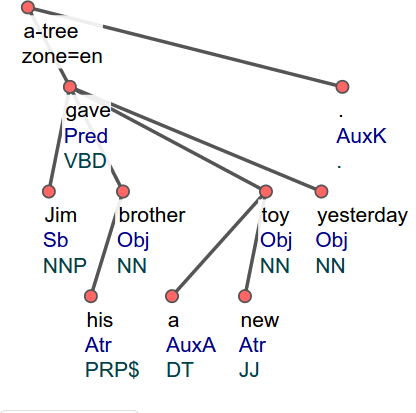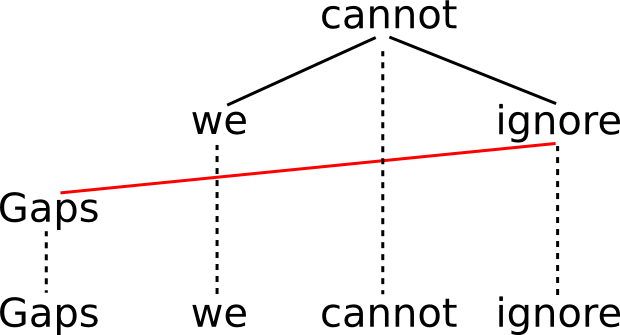Dependency Trees
 | |
| Lecture video: |
web TODO Youtube |
|---|---|
Dependency Tree
A dependency tree is a rooted directed tree with a defined linear ordering of its nodes. The nodes correspond to words in a sentence (in a constituency tree, they could be either nonterminals or words) and the directed edges mark dependency relations between nodes.
In most linguistic theories, verbs control their arguments. Therefore, e.g. the subject of a sentence will typically depend on the predicate. Modifiers of the subject (such as adjectives) will depend on the subject node and so on.
The following is a (Prague-style) dependency parse of the sentence Jim gave his brother a new toy yesterday..
Non-Projectivity
In some cases, dependency trees can be non-projective. Intuitively, we can recognize a non-projective tree by drawing downward lines from the nodes ("projecting" them). If any line crosses a dependency edge, the tree is non-projective, such as the following:

